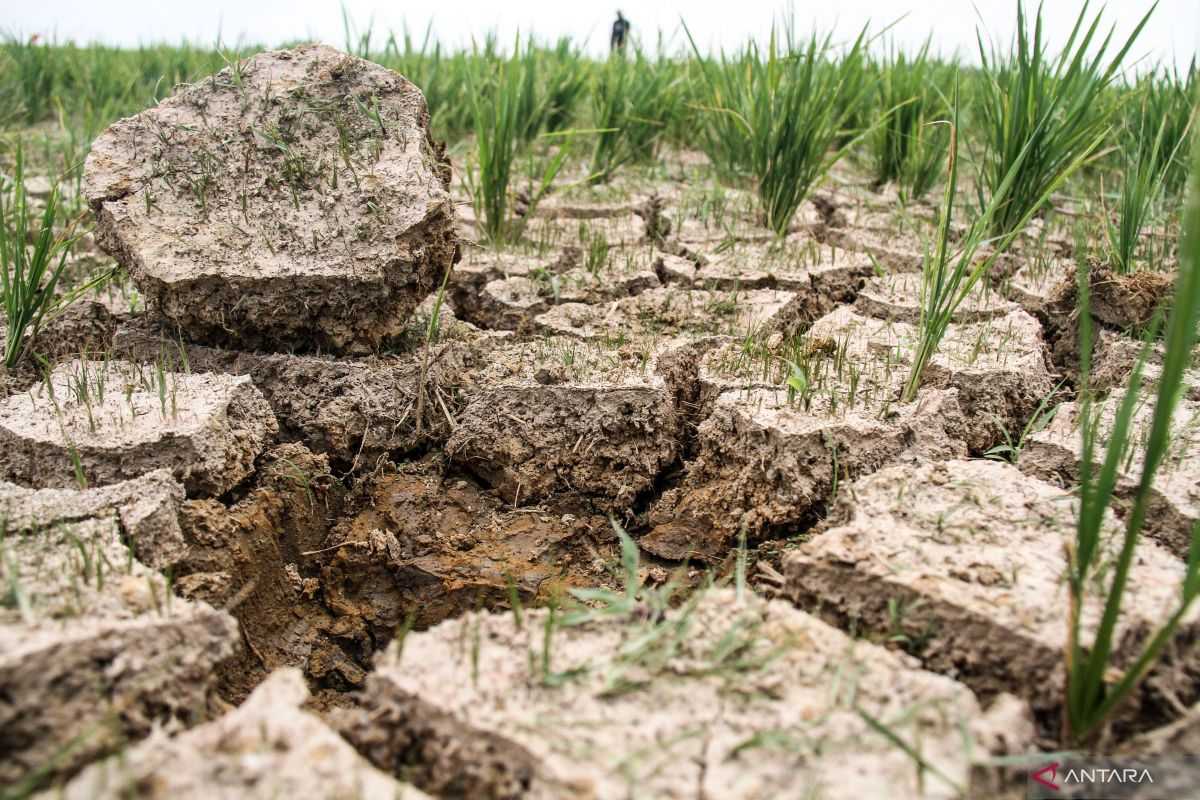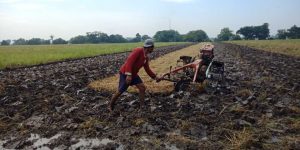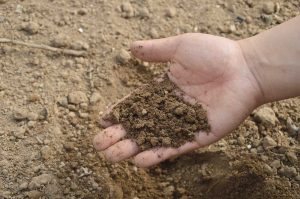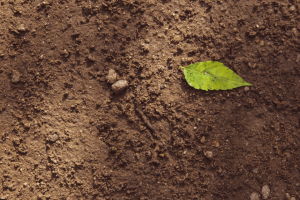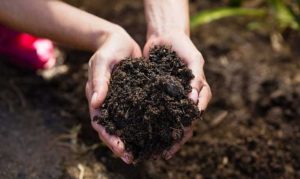Managing soil moisture in dry farmland poses a significant challenge that requires a deep understanding of soil characteristics and surrounding environmental conditions.
Soil that loses moisture quickly can disrupt nutrient absorption by plants, thereby hindering growth and significantly reducing land productivity.
Extreme weather factors, soil structures with poor water retention capacity, and minimal vegetation cover often worsen dry land conditions, making it more vulnerable to erosion and declining quality.
Efforts to maintain soil moisture not only enhance plant resilience to drought but also help preserve the balance of the soil’s micro-ecosystem.
With the right understanding, dry farmland can be managed to remain productive, maintain agricultural production stability, and support the sustainability of farming practices in the long term.
Read Also : Here Are Ways to Improve Soil Quality for More Fertile Plants
How to Maintain Soil Moisture in Dry Farmland
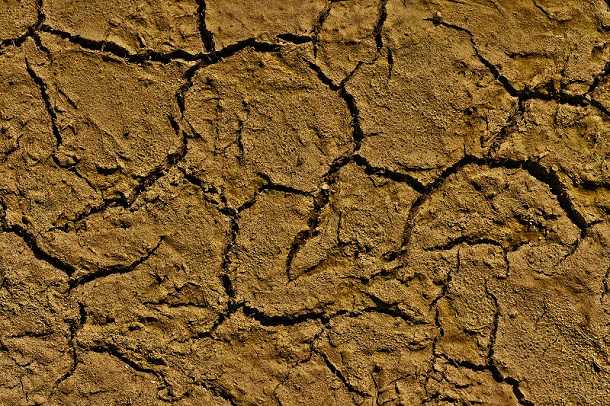
Here are the proper ways to maintain soil moisture in dry farmland that can be applied to ensure the soil remains supportive of optimal plant growth.
1. Use of Organic Mulch on Soil Surface
Organic mulch plays a crucial role in maintaining soil moisture, particularly in dry farmland where water loss occurs rapidly. Layers of mulch such as straw, dry leaves, or grass clippings act as a protective barrier, shielding the soil from direct sunlight that causes excessive evaporation.
The presence of mulch helps stabilize soil surface temperature, enabling roots to develop properly even under intense heat.
Additionally, this protective layer reduces the impact of wind erosion, which often disrupts soil structure in dry areas, allowing the soil to retain its water-holding capacity effectively. The decomposition process of organic mulch also enriches the soil with nutrients, improving its quality over time.
The use of mulch also positively affects the activity of microorganisms living in the soil. A more humid environment enables microorganisms to work more effectively in decomposing organic matter, thereby enhancing the nutrient cycle. As the mulch breaks down, it forms humus that improves the soil’s ability to retain water.
This makes mulch not only a short-term solution for moisture retention but also a long-term investment in sustainable agriculture. Consistent application of organic mulch can help farmers maintain land productivity, reduce irrigation needs, and sustain soil fertility even during extended dry seasons.
2. Planting Cover Crops as Soil Protection
Cover crops such as legumes, beans, or grasses help shield the soil surface from excessive water evaporation. Their foliage provides shade that minimizes direct sunlight exposure to the soil, allowing moisture to last longer.
The roots of cover crops also strengthen soil structure, prevent erosion, and improve water infiltration. With these plants in place, the soil can store more water reserves for use by the main crops. Additionally, cover crops suppress weed growth, which often competes for water and nutrients.
Beyond moisture retention, cover crops enrich the soil’s organic content through biomass decomposition. Nitrogen produced by leguminous plants significantly enhances soil fertility, promoting better growth for the main crops.
This dual function makes cover crops an integral part of soil and water conservation strategies in dry farmland. With proper management, cover crops not only preserve soil moisture but also create a more sustainable agricultural system.
These combined benefits help farming operations withstand unpredictable weather conditions and the increasing risk of drought.
3. Utilization of Organic Fertilizers to Enhance Absorption
Organic fertilizers such as compost, manure, or green matter improve soil structure, making it looser and more capable of retaining water for longer periods.
The improved soil texture allows water to penetrate the pores more easily while reducing surface runoff that leads to water loss. The organic content in these fertilizers increases the soil’s cation exchange capacity, enabling plants to absorb nutrients more effectively.
This structural improvement stabilizes soil moisture and supports deeper root development. As a result, plants become more resilient to drought stress.
In addition to enhancing water absorption, organic fertilizers enrich the soil with microorganisms that accelerate organic matter decomposition.
These microbes produce substances that improve soil aggregation, further optimizing its water-holding capacity. Organic fertilizers also increase long-term soil fertility without leaving harmful chemical residues that could damage the soil ecosystem.
The benefits extend beyond a single growing season, ensuring sustained soil health. With consistent use, organic fertilizers can transform dry farmland into highly productive and supportive soil for crops.
4. Adjusting Plant Spacing for Better Canopy Cover
Planting crops closer together creates a canopy that shades the soil surface, protecting it from direct sunlight exposure. This shading effect reduces evaporation rates and keeps soil moisture levels stable.
Proper spacing also minimizes wind flow between plants, decreasing water loss caused by wind. With a more shaded soil surface, water from irrigation or rainfall lasts longer in the soil. This approach is especially important in dry farmland where water availability is limited.
Moreover, tighter plant spacing improves land use efficiency and increases overall productivity. The formed canopy suppresses weed growth, which typically accelerates moisture depletion.
The microclimate between plants becomes cooler, allowing roots to work more effectively in absorbing water and nutrients.
This strategy also mitigates environmental stress caused by extreme weather. When implemented correctly, closer spacing becomes a cost-effective method for maintaining soil moisture in dry conditions.
5. Efficient Use of Drip Irrigation Systems
Drip irrigation delivers water directly to plant roots in controlled amounts, minimizing evaporation and water wastage. This system is highly effective in dry farmland as it allows water to be distributed slowly, keeping the soil moist for longer periods.
Water-use efficiency is significantly higher compared to conventional irrigation methods, which often result in water running off the surface.
This ensures that plants receive adequate water even when supply is limited. Drip irrigation also reduces the risk of soil erosion caused by heavy water flow.
Beyond maintaining soil moisture, drip irrigation enables farmers to control the frequency and volume of water application according to crop needs. Fertilizers can also be delivered through the system, maximizing nutrient uptake. Soil around the roots remains at an ideal moisture level, creating favorable conditions for plant growth.
Another advantage of this method is reduced weed growth since the soil surface stays relatively dry. With proper implementation, drip irrigation becomes a long-term, environmentally friendly solution for improving productivity in dry farmland.
6. Constructing Raised Beds to Retain Rainwater
Raised beds help retain rainwater, preventing it from flowing out of the farmland too quickly. These structures act as temporary water reservoirs, allowing water to seep gradually into the soil.
In dry areas with low rainfall, every drop of water is valuable and must be used efficiently. Raised beds also enhance root development by providing plants with more time to absorb available water. Consequently, soil moisture remains longer after rainfall events.
Besides retaining water, raised beds reduce erosion and protect soil structure from surface runoff damage. The soil remains more stable, improving its water absorption capacity over time. Crops planted on raised beds gain better access to water and nutrients.
This method also simplifies land management tasks such as fertilization and weed control. Regular use of raised beds increases the soil’s water-holding potential, ensuring consistent productivity in dry farmland.
7. Adding Organic Matter Such as Compost
Compost improves the soil’s water retention capacity while enhancing its structure. The organic materials in compost create crumbly soil aggregates, allowing pores to absorb and store water more effectively.
This property is particularly beneficial for dry farmland, where rapid moisture loss is a major concern. Compost also serves as a continuous source of nutrients for crops. The decomposition process of organic materials helps maintain soil quality over the long term.
Additionally, compost enhances soil microbial activity, which is essential for a healthy land ecosystem. These microbes accelerate the breakdown of organic matter, increasing soil nutrient availability.
With better water and nutrient supplies, crops grow stronger and are more resistant to drought stress. Compost also helps neutralize soil pH, making it suitable for a wider range of crops. Regular compost application can transform low-yielding land into fertile, productive soil that supports resilient crop growth.
8. Utilizing Soil Moisture Sensor Technology
Soil moisture sensors provide accurate monitoring of soil conditions, enabling irrigation to be scheduled based on actual needs.
This technology helps avoid overwatering or underwatering, both of which can harm plants. Data collected from the sensors allow farmers to determine the right timing and amount of water to maintain optimal soil moisture.
This also improves water-use efficiency in dry farmland. Data-driven decisions make land management more precise and resource-efficient.
Beyond improving water efficiency, sensors help minimize plant stress caused by fluctuating soil moisture levels. These systems can be integrated with automated irrigation, ensuring water supply always meets plant requirements.
In the long run, this leads to higher productivity as crops grow under optimal moisture conditions. The technology also allows for periodic assessment of soil quality, enabling timely improvements. By adopting this technology, managing soil moisture in dry farmland becomes more effective, modern, and sustainable.
Each of the methods above plays an important role in maintaining the balance of soil moisture in dry farmland. A combination of these various steps will yield more effective results than applying only one method.
Proper management will create land that is more resistant to extreme weather conditions, support optimal plant growth, and increase long-term agricultural productivity.
Read Also : 7 Basic Techniques for Preparing Soil for the Planting Season

